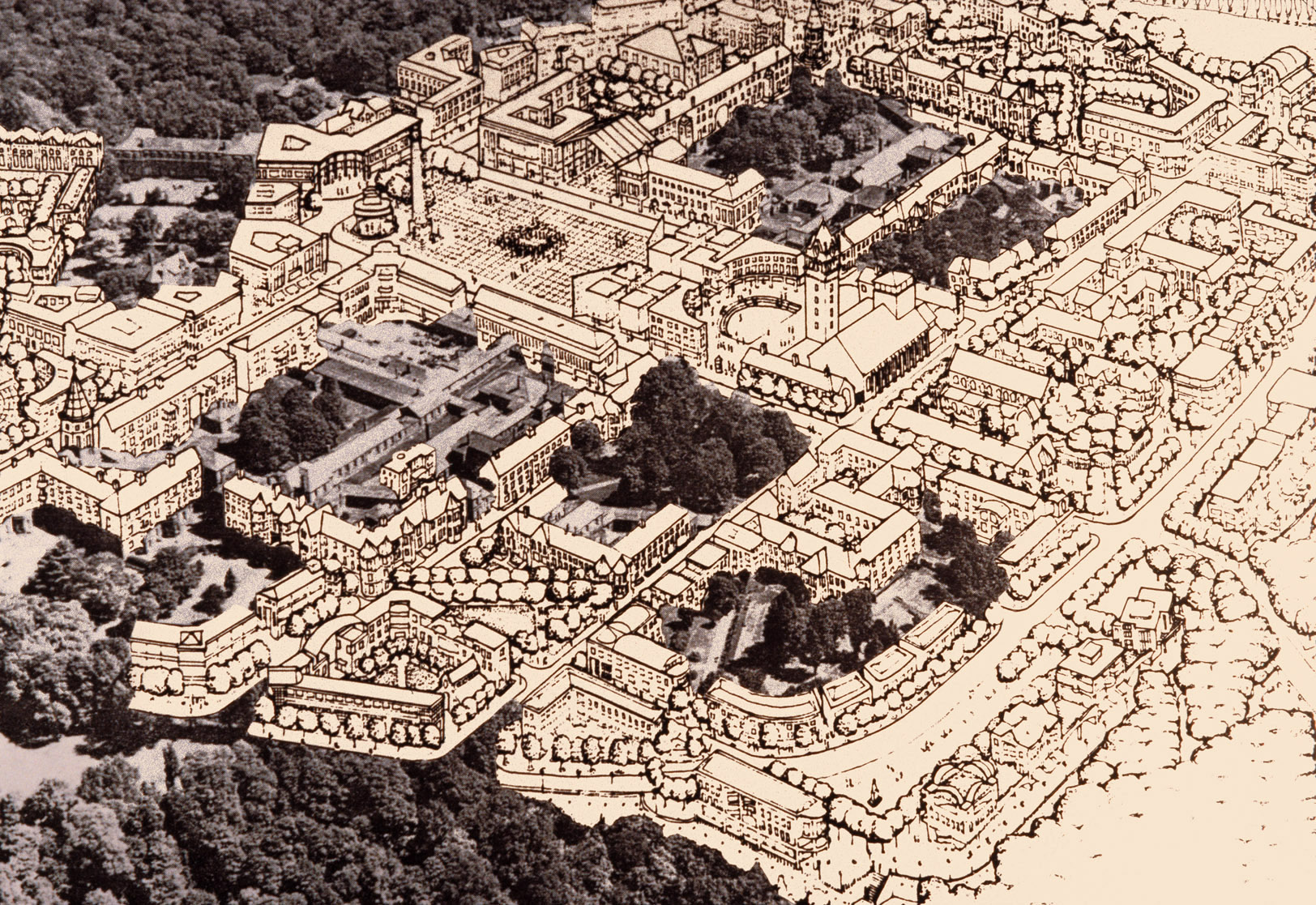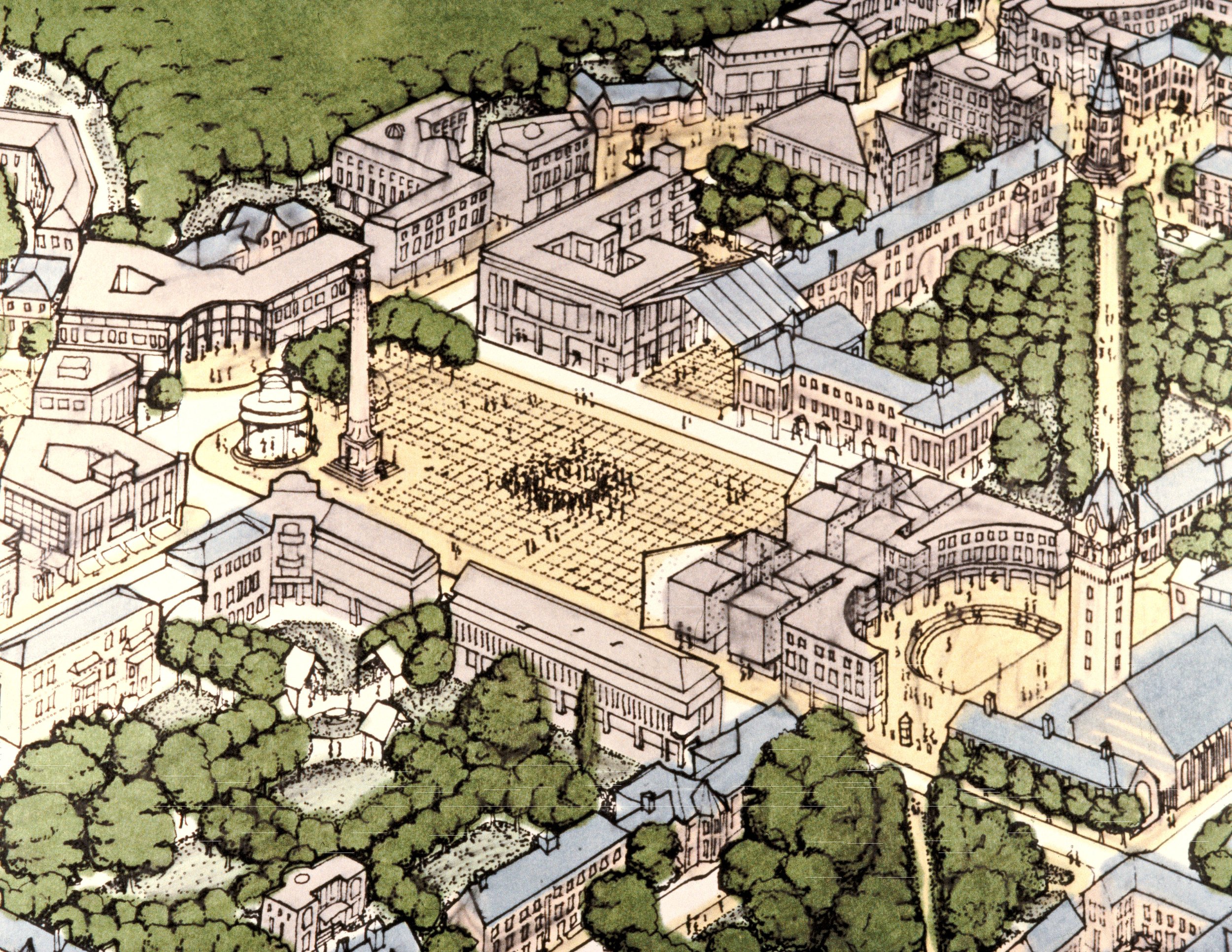Urban design and Masterplanning
TOMORROW’S NEW COMMUNITIES
A concept using the contemporary vision of a small town to inform the transformation of former asylums (often with listed buildings and landscapes) into communities or urban quarters.
John Burrell’s groundbreaking and award-winning work on the reuse of institutional brownfield NHS land was published in 1987 with the aid of a RIBA Research Award as ‘The Psychiatric Hospital as a New Community’.
It has had far-reaching influence on planning policy and John Burrell became a member of the Labour Party working group on urban design and planning.
“The use of fine redundant Victorian institutional buildings as the centre of a new community is imaginative and forward-looking, and much in keeping with modern thinking. It makes full use of splendid buildings as a hub for regeneration. It further utilises virgin land with the infrastructure for the most part already in place. Most importantly it is capable of replication. Clearly this can be used as a model for producing affordable, balanced communities.”
Extract from the Joint TCPA & Rowntree Trust New Settlement Competition brochure
This project began in 1985 and has received wide publicity, of which the presentation made no secret and in fact put to good graphic use. It received high, unanimous accolades from the judges on various grounds: its replicability; the potential it offers for the viable conversion of urban/suburban sites; its imaginative conversion of high quality (often listed) redundant buildings; and its application to a strong urban design. Other immediate advantages are the mature landscaped grounds that surround many psychiatric hospital sites and the fact that they often are in prominent positions offering the possibilities of remaking a compact 'hill town'.
The submission is to make a new urban 'quarter' within an existing built-up area, and by "tailoring different uses in a co-ordinated layout... to maximise the land use, prestige, and potential value of sites". The target population would be between 8,000 and 15,000 - sufficient to support a wide range of facilities and offering considerable scope for employment on the spot. Public transport already exists as does much of the infrastructure, while one intention of the developments would be to lessen inward commuting towards the main city centre.
In some sites, in particular that at Woodford Green upon which the submission is based, there is already a theatre (cinemas are proposed in addition) as well as sports fields, a bowling green and tennis courts.
Primary and secondary schools, shops and health facilities would be provided and housing would be divided between 60% family and 10% special needs with low cost, self-build and other affordable alternatives the remaining 30%. Rodney Beaumont praised its "innovative ideas in creating a mixed housing working and leisure community".
The architecture would take a formal, relatively dense form, relying on a strong sense of the street as well as the diversity offered by landscaped courtyards and a variety of other urban spaces. One aim is to avoid a diffused, low density, suburban landscape.
Management would be by a group set up within the local authority or by a separate Community Development Trust. Further advantages of these proposals include the availability of the land, owned by the Department of Health and already declared surplus, and the fact that the new communities would not in any way impinge upon Green Belt or viable agricultural land. People in existing local communities, brought in at an early stage and in a helpful fashion to participate in planning discussions, are likely to benefit from the proffered new amenities within their own wider neighbourhood. Such schemes would be good value for the community as a whole and 'an asset in urban planning terms'.
The judges' comments tell the rest of the story. The Chairman, Lord Vinson, praised "the universality of the scheme, its practicality and the fact it was imaginative”. These feelings were echoed by the other judges.
“The concept of recycling unwanted buildings and sites with existing infrastructure at low land costs is an extremely attractive one - and seems likely to be widely applicable throughout the country.”
“This is a brilliant scheme to re-use some of our fine and lavish architecture in a way which will suit all parties. It needs a pioneering entrepreneur to carry it through the armoured government departments.”



